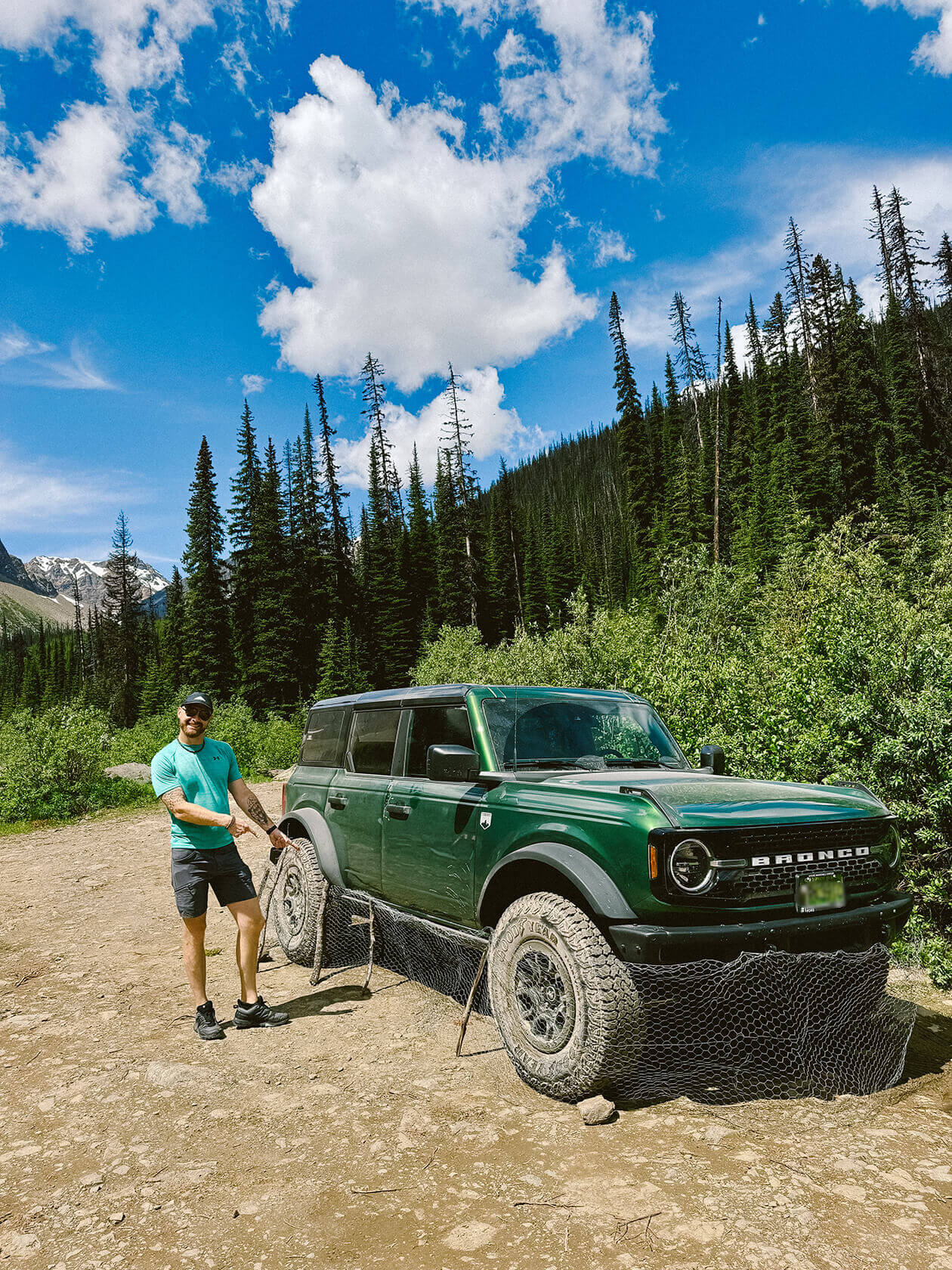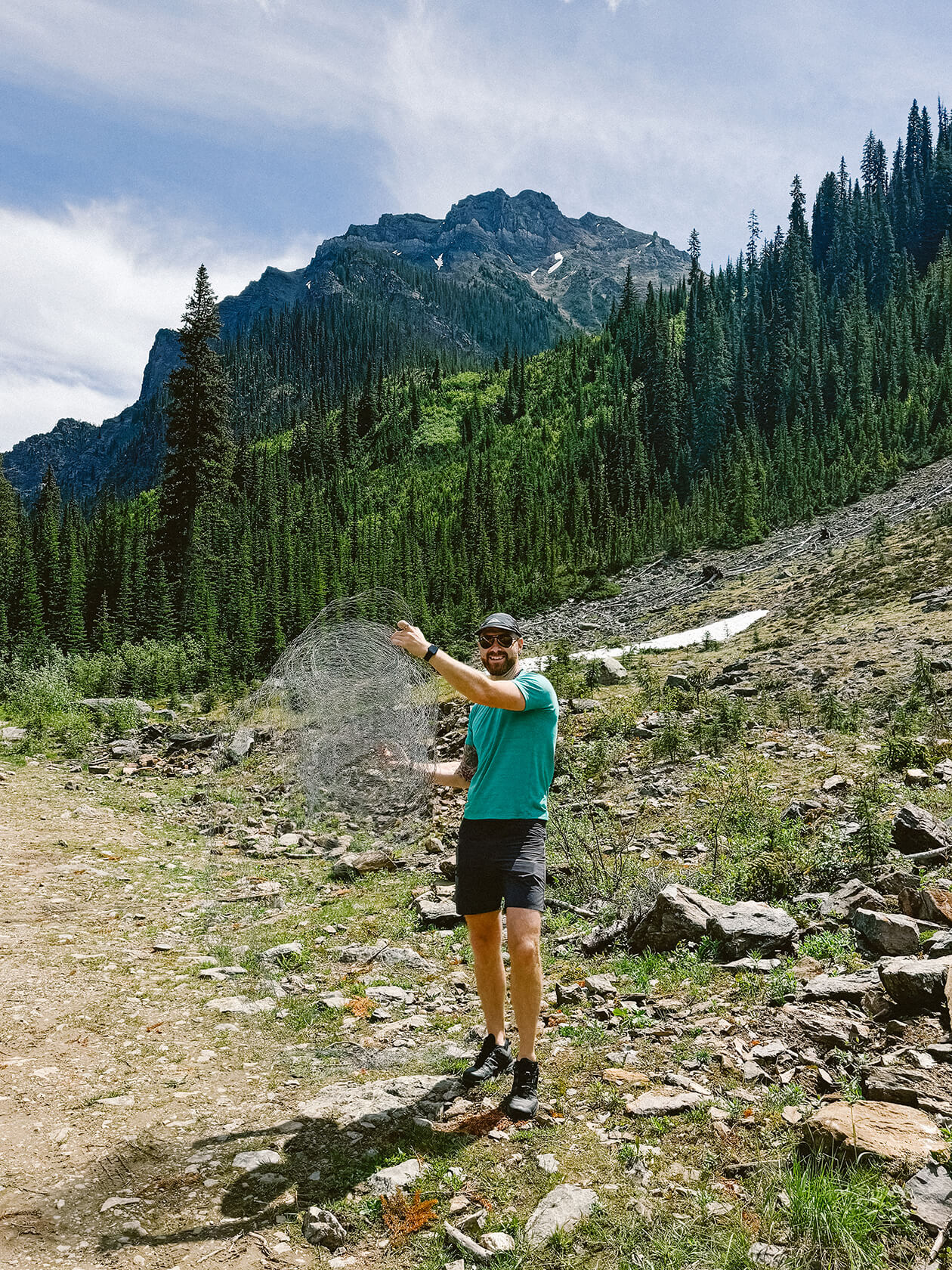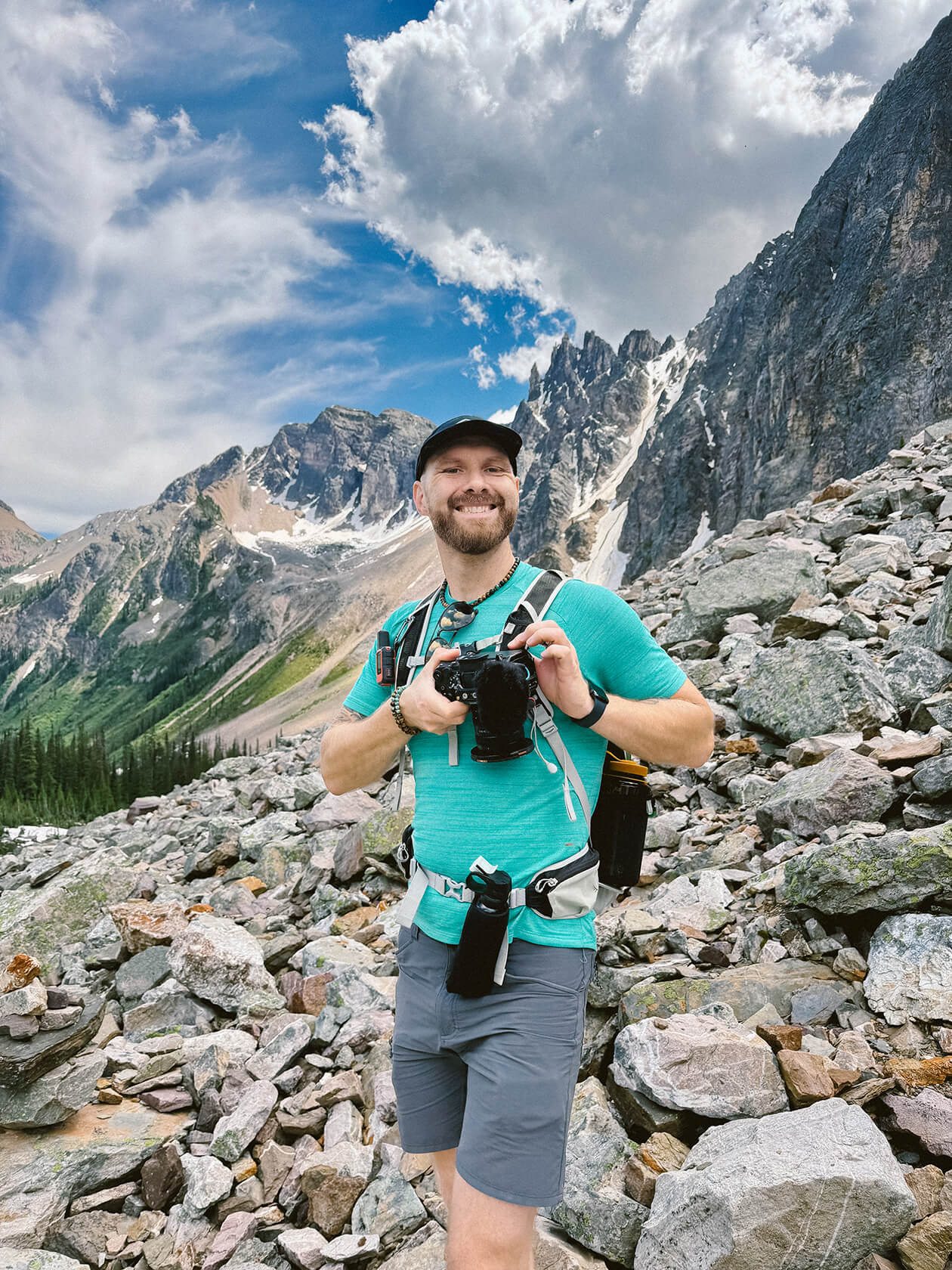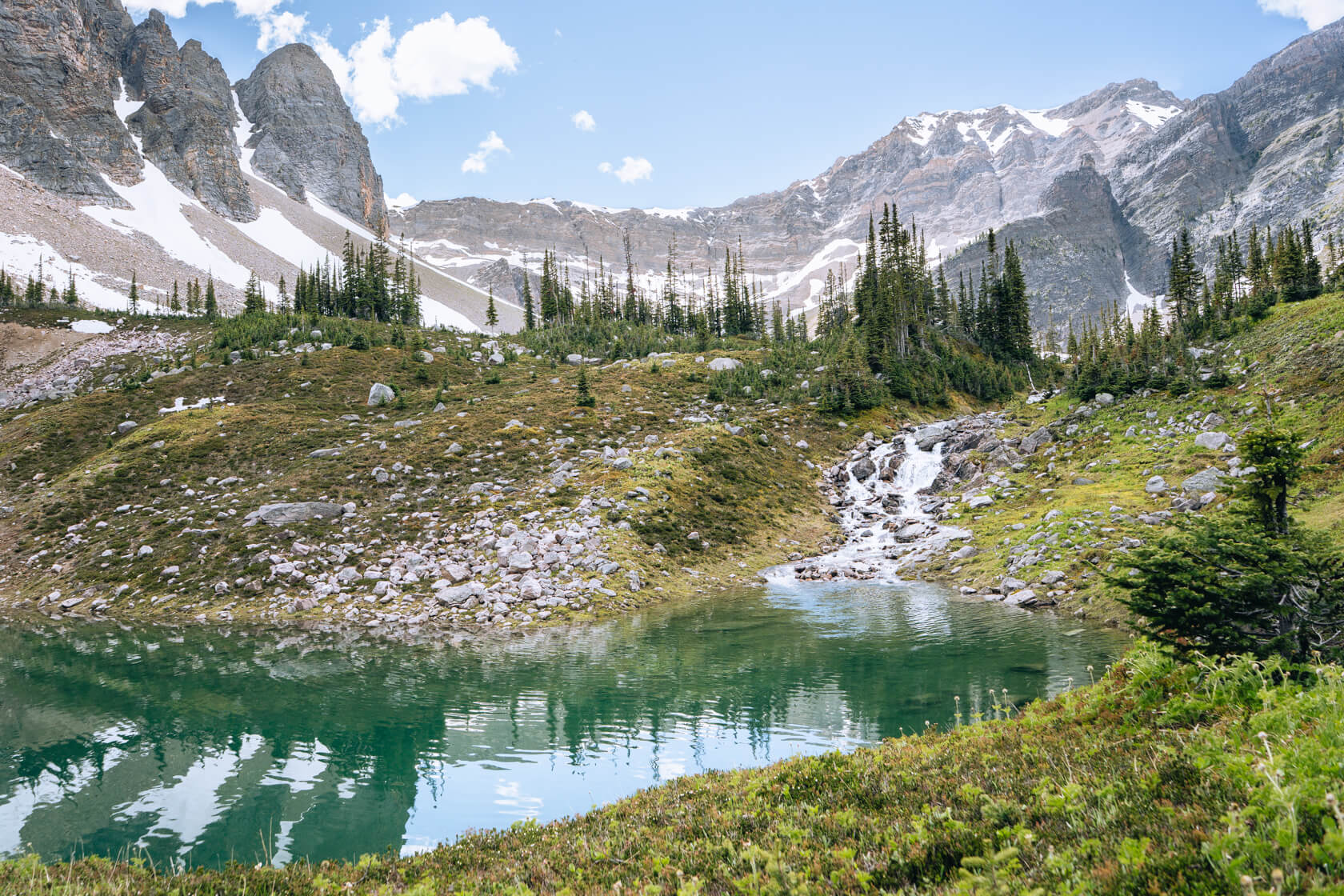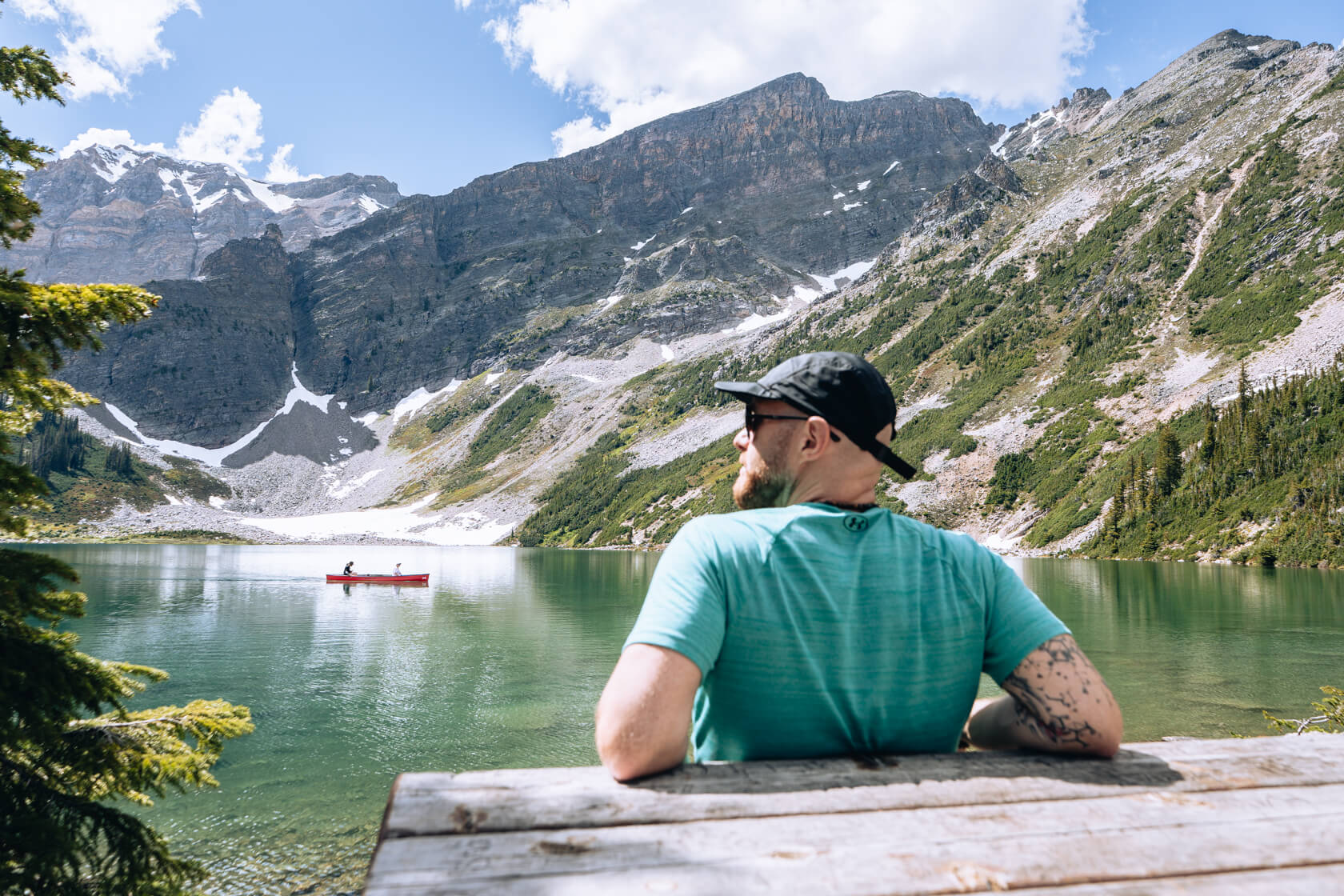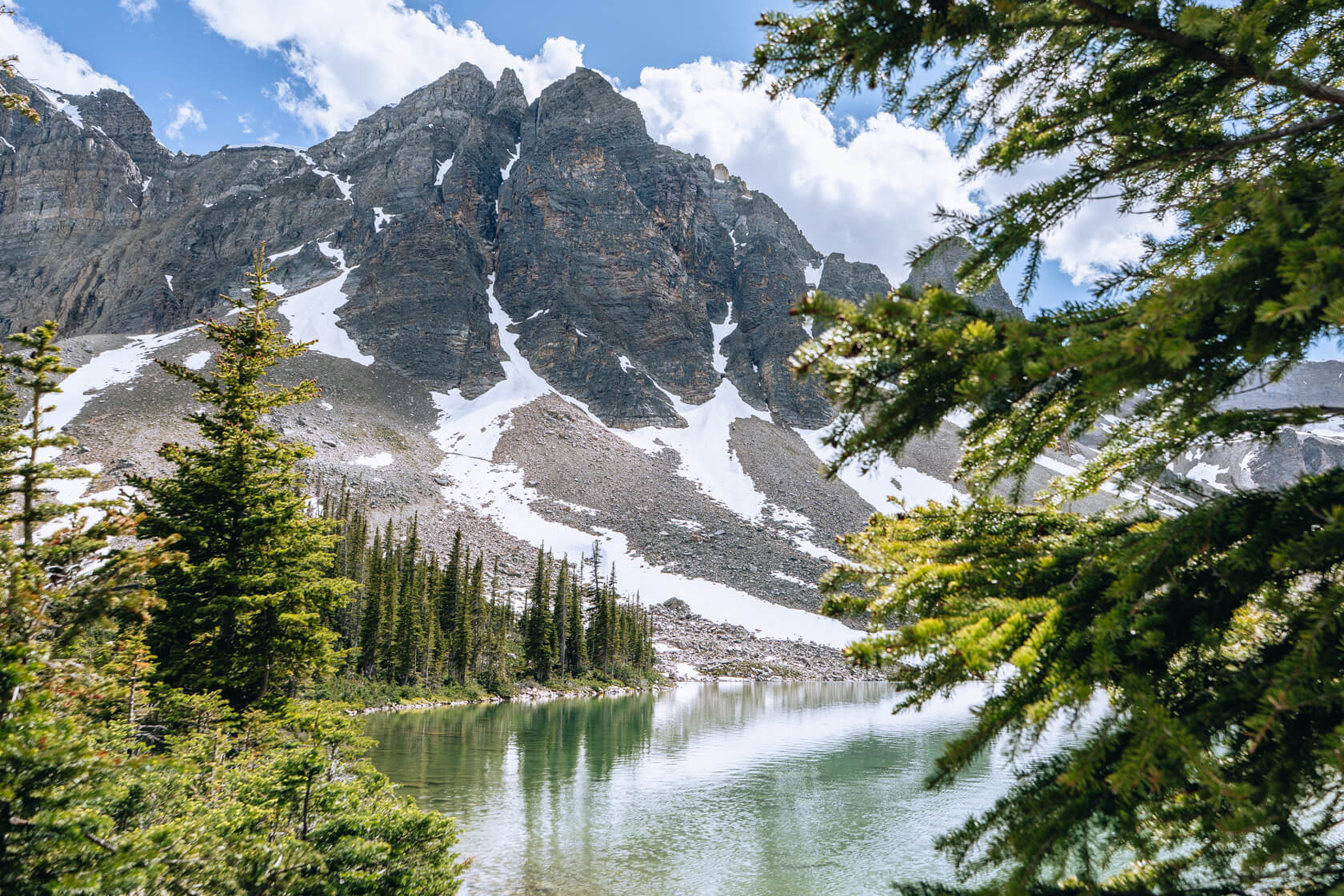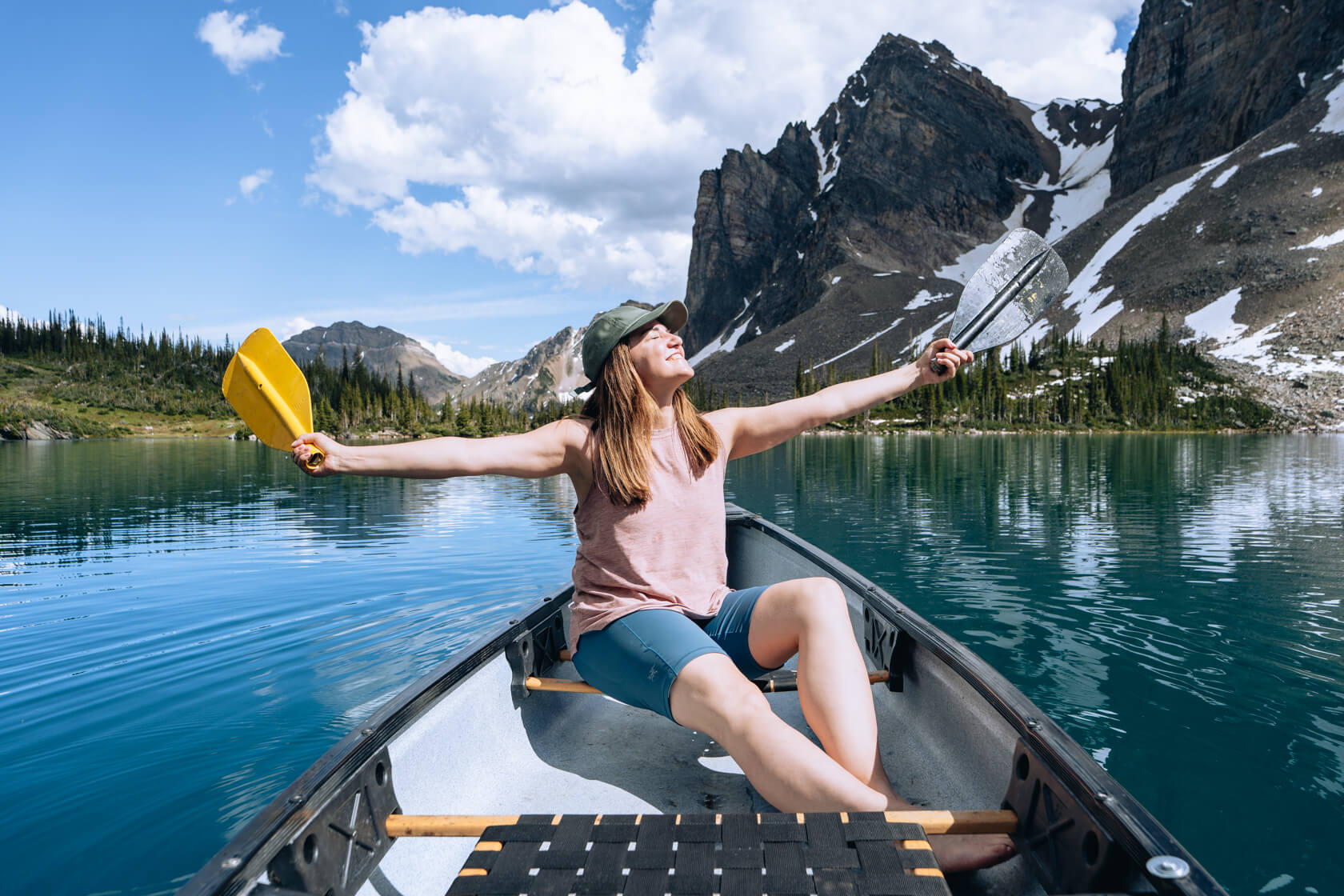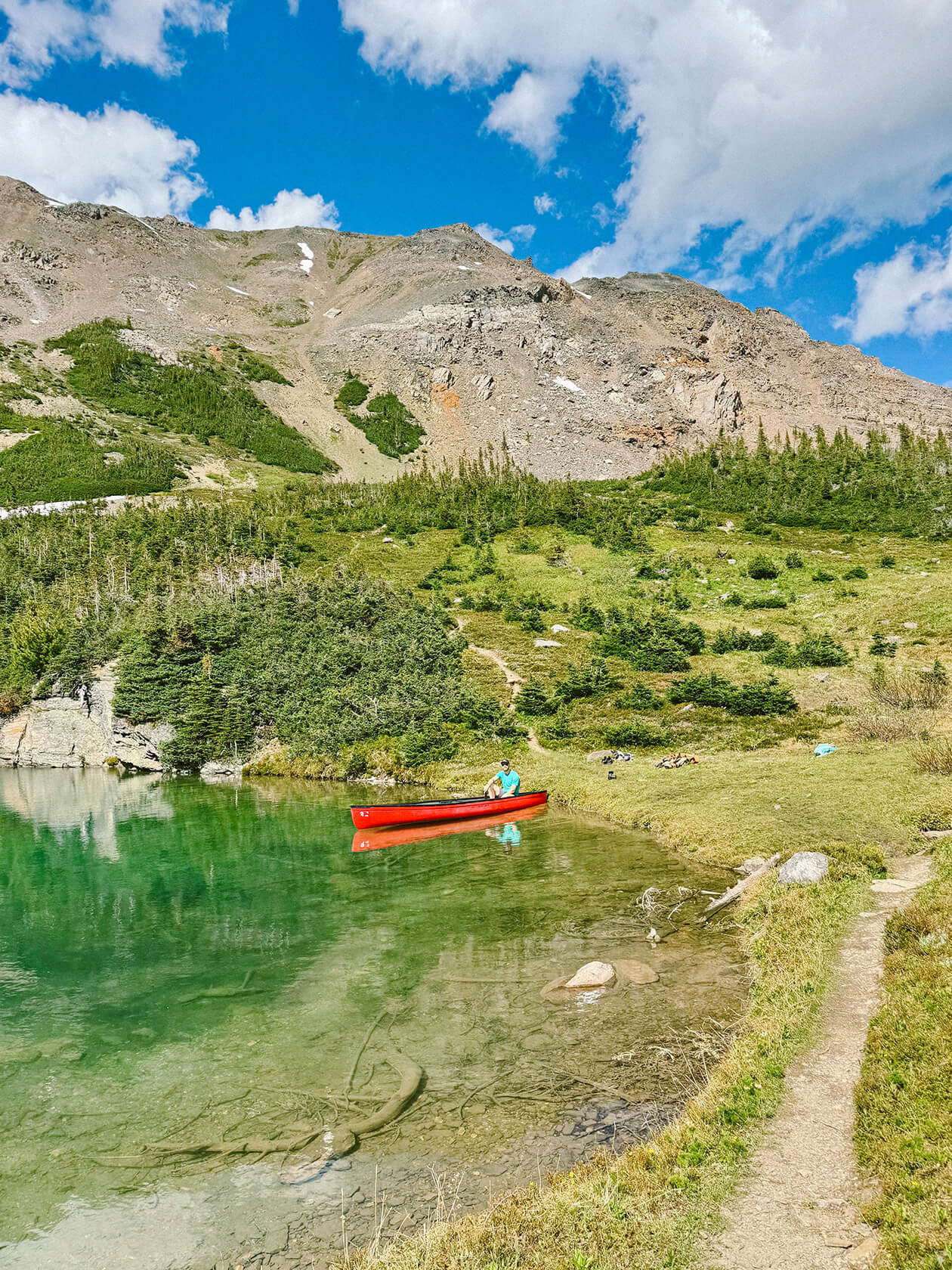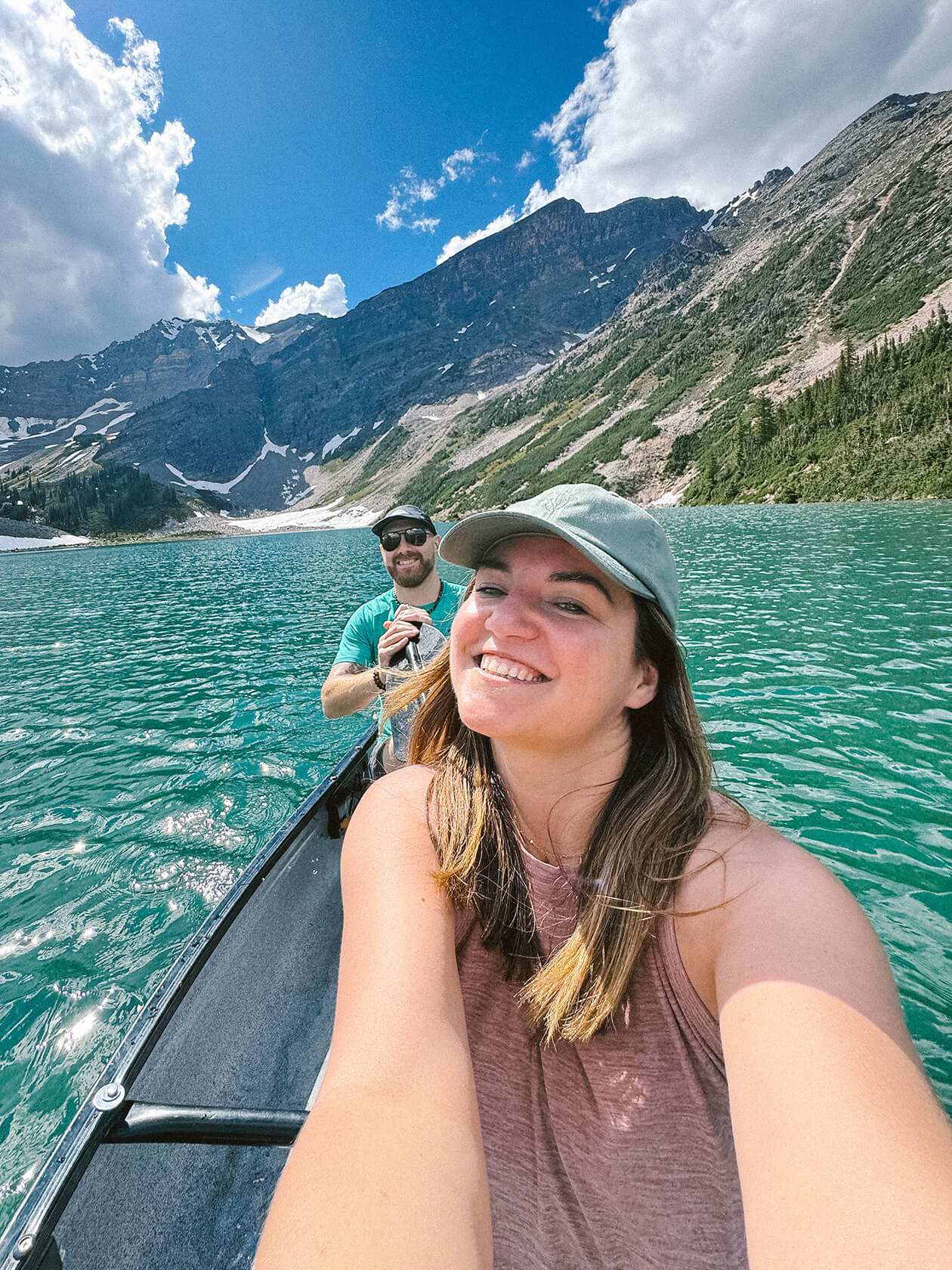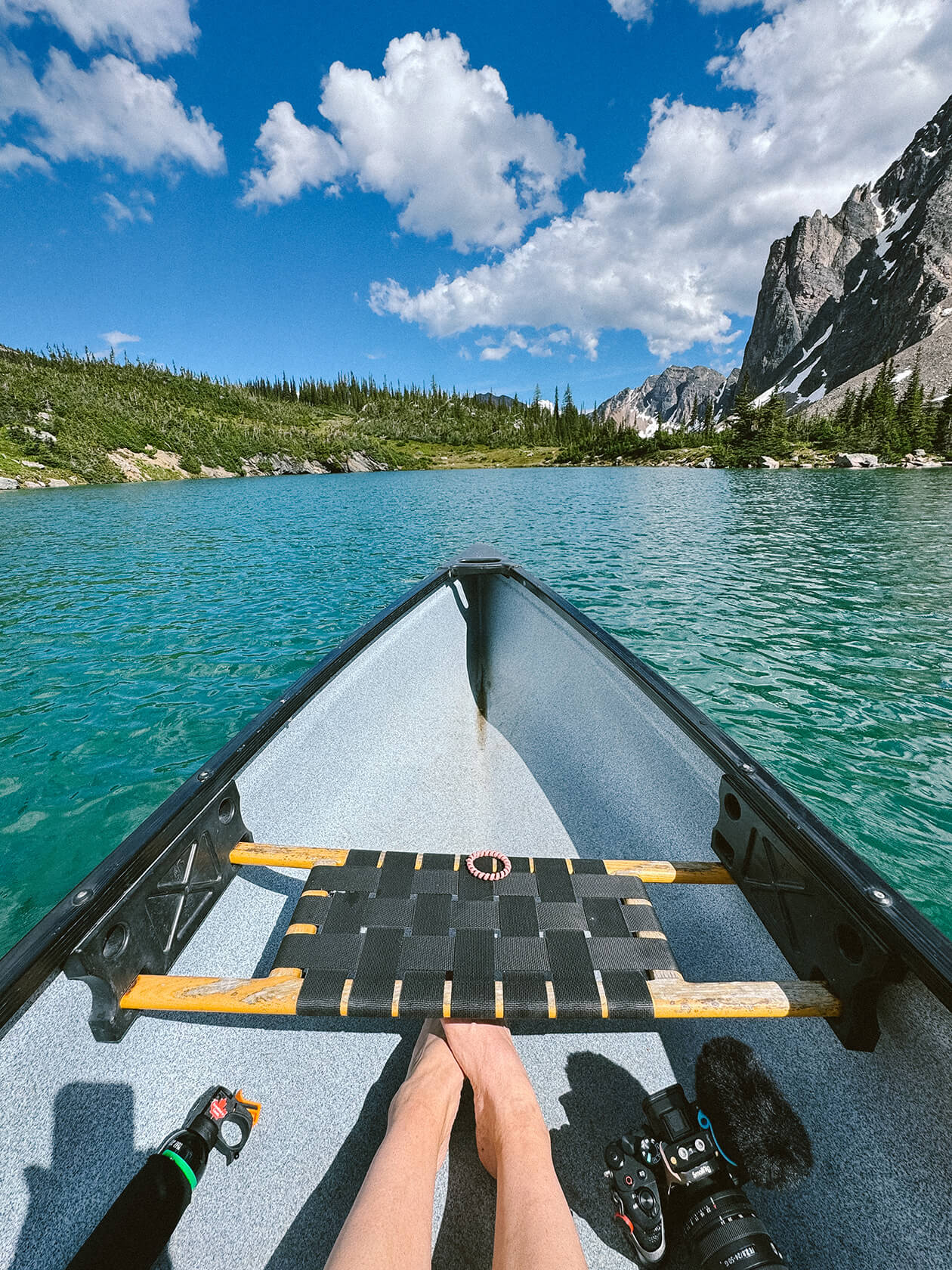Hiking to Gorman Lake in Golden, BC – A Complete Guide
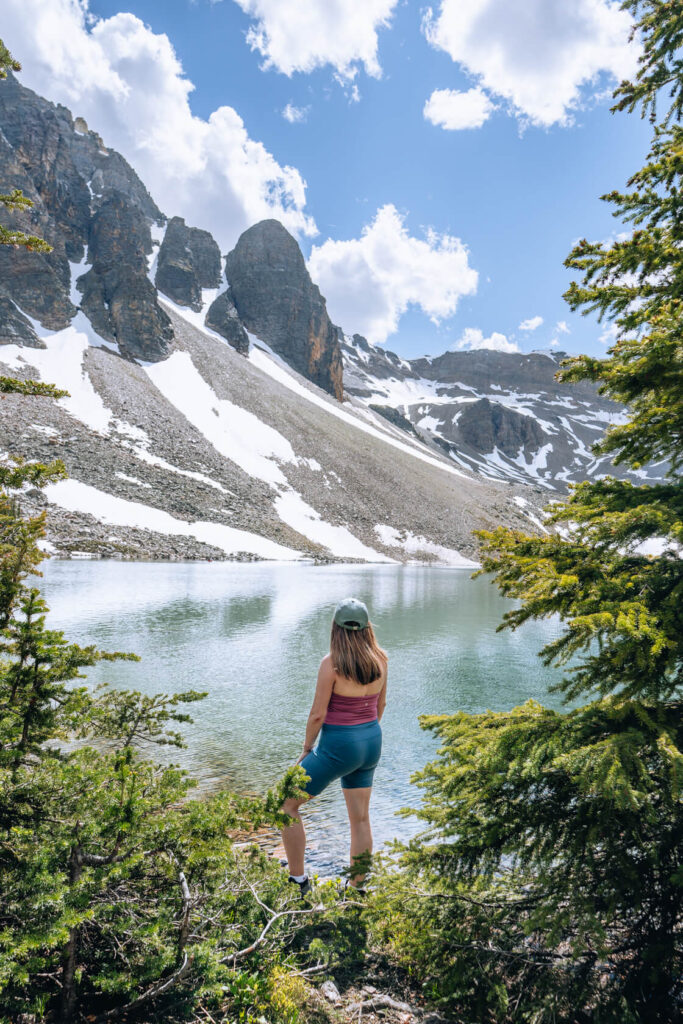
Tucked into the mountains above Golden in British Columbia, Gorman Lake is an adventurous alpine hike that’s something of a secret known only to the local community and those who like to explore off the beaten path. Accessible in the summer via a rough forestry road, the trail is secluded, wild and gloriously quiet, which was the main appeal for us and the reason it had been at the top of our bucket list for the longest time.
After one failed attempt (thanks to a road that was a little more adventurous than our rental car could handle), we finally made it in summer 2025. And it was worth the wait! After a relatively low-effort hike from the trailhead, we arrived at a stunning lake set in a dramatic mountain basin and it felt like stumbling into a postcard. The real surprise though was waiting on the shoreline – a free canoe ready for anyone to paddle out and take in the scenery from the water. At 2,000 metres, that’s a rare reward and a testament to why this isn’t just another hike but a true hidden gem.
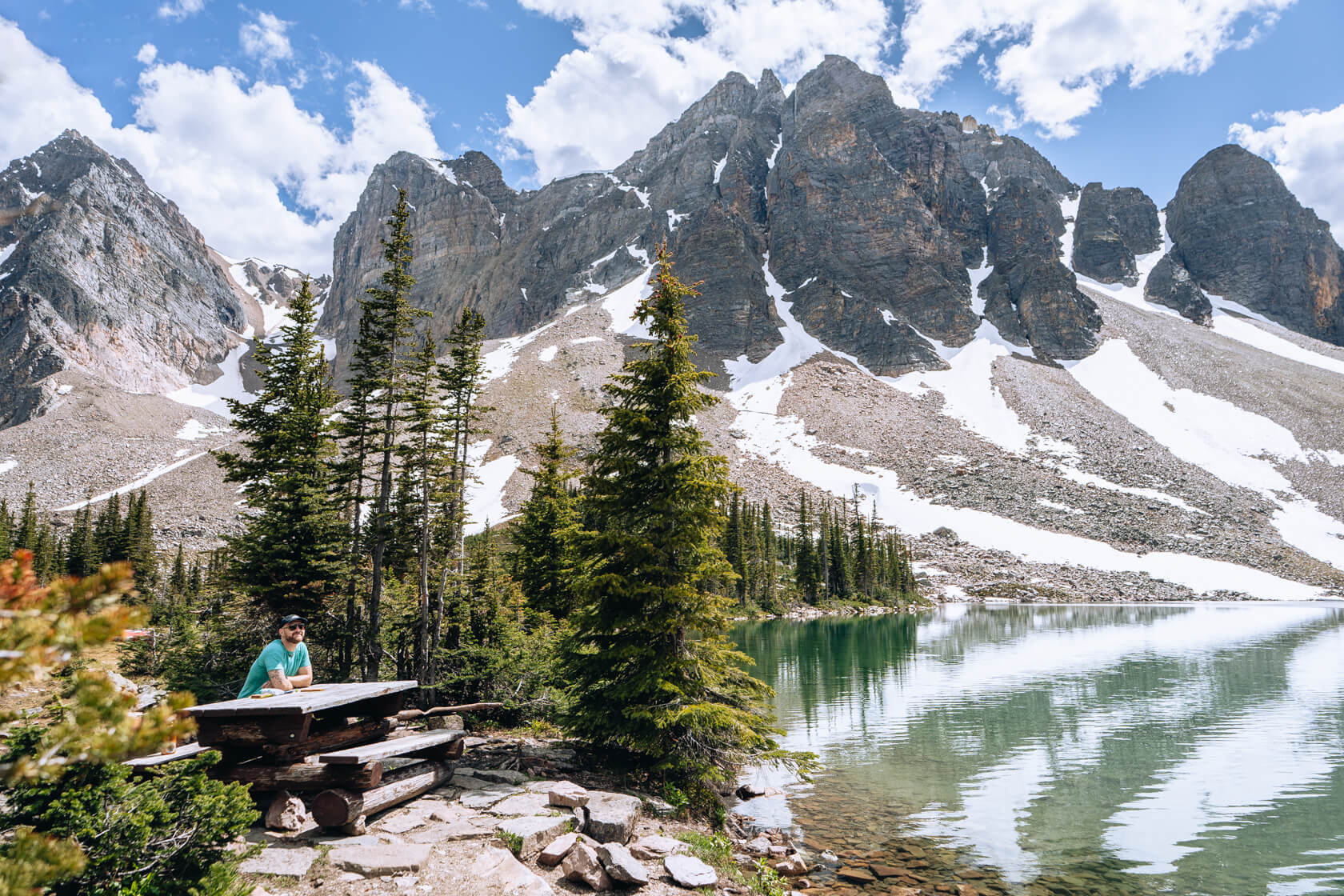
Planning considerations
🚙 Trailhead Access: Via Forest Service Roads (FSRs)
🏞 Hiking distance: 7.1 km (round trip)
⛰️ Elevation Gain: ~325 m
🥾 Pure Moving Time: ~2.5 hours (moderate pace)
📱 Cell Reception: None
🥵 Difficulty: Moderate (mainly because it’s secluded, but fitness wise it’s on the lower end of moderate, though you still need to be in shape)
☀️ Best Season: July through September (the road may be snowbound until early July)
🦮 Dog-Friendly: Yes, but keep dogs on leash (bears are present)
🦍💨 Outhouses: There is an outhouse at the start of the trail, but the condition leaves a lot to be desired, so we didn’t use it. There were also a lot of wasps around. Assume there are no usable facilities and be prepared to pack out all waste.
🪵 Other Facilities: There are tables at the lake, which makes it a really nice spot to enjoy food and snacks you carried in your backpack.
Preparing for the Gorman Lake Hike
This hike may be on the shorter side, but it definitely takes some preparation, especially if you’re not used to hiking in BC. This is why we waited so long to do this hike ourselves – we just didn’t feel fully prepared.
1. Driving The Forestry Road to Gorman Lake
The biggest challenge with Gorman Lake isn’t the trail, it’s the drive to the trailhead. The route begins from the edge of Golden, then follows forestry roads. The first 10 kilometers are fine, easy enough for most vehicles. The last 5 km though are rough and this is where you really need a 4×4. It’s a narrow single lane that is much steeper and gradually gets worse, with a lot of potholes and loose rocks along the way.
When we went in 2025 we drove up in a Ford Bronco with no issues. The year before we tried it in a Chevrolet Trax and had to turn back. We did see cars like Subaru Forester up there, so if you have something similar with all-wheel drive and slightly raised clearance, you might be okay. Still, we wouldn’t recommend it. Personally, we’re not super confident off-road drivers and would feel much more comfortable in a proper 4×4. Plus, most rental companies don’t cover damage on forest roads, so if you’re renting, it’s worth thinking twice before taking the risk.
It’s also worth knowing that this is an active logging road and you really don’t want to meet a big logging truck head on! We went on the weekend and only met 4x4s coming the other way, but after a little maneuvering we passed each other just fine.
There can be other surprises too. On our way down, a tree had fallen right across the road (see the pic below). Luckily we managed to drive over it, but it was a good reminder of just how deep into the backcountry this road takes you and that there is no one out there to help you.
Depending on the year, there can also still be snow on the road well into June or even July, so it’s worth checking conditions before you head out. Even with the bumps and surprises, though, getting there is part of the fun and once you reach the trailhead, it’s all worth it.

Single lane section of Gorman Lake FSR (and a lovely view) 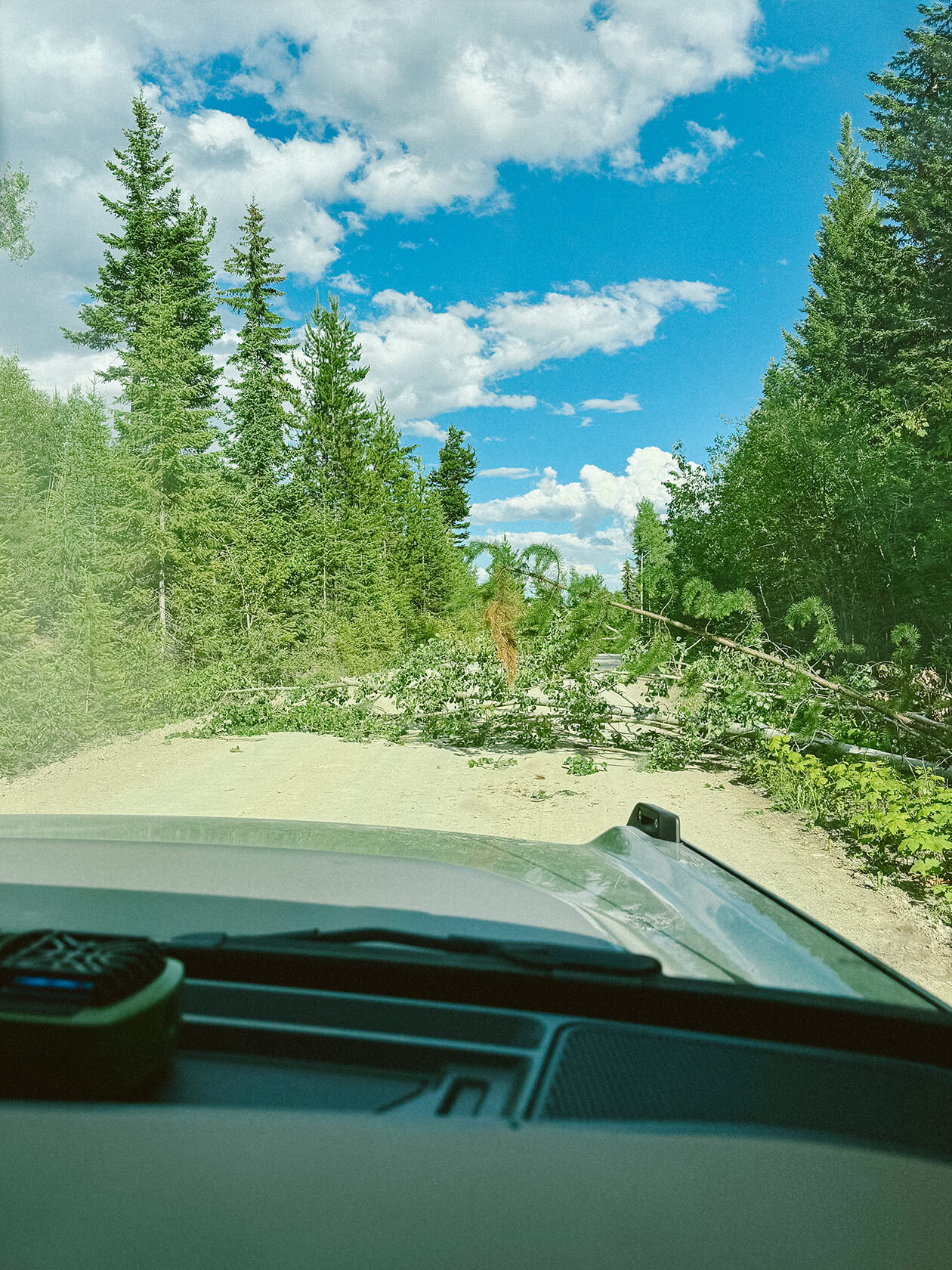
On the way back we run into a fallen tree blocking the road (it wasn’t there on the way up)
2. Keeping porcupines from damaging your vehicle
Yep, porcupines!
They apparently hang out a lot by the trailhead and love to chew on brake lines and cables under parked cars. If you’re leaving your car overnight or showing up early or late in the day, it’s worth wrapping it in chicken wire. For a quick day hike it’s less of a concern, but we did it anyway just to be safe.
3. Staying Safe Around Bears
Gorman Lake sits on the edge of a protected grizzly habitat so it’s worth knowing bears are out there and occasionally wander down to the shoreline. The good news is that predatory encounters are extremely rare and with a little know-how, sharing the trail with bears is not dangerous. Carry bear spray, hike in a group and know how to react calmly if you do happen to cross paths with one. Most importantly, don’t leave any food behind, not even an orange peel, apple core or a cracker. Leftover scraps can attract bears long after you’re gone, putting the next hikers at risk.
How to Get to the Gorman Lake Trailhead
From downtown Golden, it’s about a 10 to 15 minute drive to the start of Dogtooth FSR, which you’ll find on the left roughly 2 kilometers past the Kicking Horse Golf Course. From there, give yourself about 45 minutes to reach the trailhead. Google Maps will only get you partway there, so don’t rely on it. Instead, use the step by step instructions on the BC Recreation Trails and Sites website.
Gorman Lake Trail Overview
Trail Map and Elevation Profile
Hike To Gorman Lake
The hike to Gorman Lake is varied and has an excellent effort-to-reward ratio since it has views all the way.
There is a map kiosk and an obvious path visible from the trailhead. The path leads through the forest at first, but the forest is open and every so often you catch glimpses of the dramatic rock formations off to your left.
Eventually the trees thin out and you step into a big boulder field. It looks a little intimidating at first, but the trail is actually pretty easy to follow. There are cairns (little stacks of rocks) to guide you across, and the grade never gets too steep. If you’re hiking early in the season, this section can still hold quite a bit of snow. We didn’t need spikes when we hiked at the end of June, but reviews just 2 weeks earlier mentioned deep snow. Even in July, it’s worth checking conditions before you go.
After the boulders it’s just a short kilometer to the lake. Along the way, you’ll pass a smaller tarn and a little waterfall that are worth a quick stop. Then you go over a small rise and and suddenly Gorman Lake comes into view. It may not be quite as blue as some of the famous glacier-fed lakes in BC, but what makes it special is that it’s wonderfully quiet.
We found a bench and a table along the shoreline to have our lunch and give our bodies some rest. And for a while, with noone else around, it felt like the place belonged just to us.
Exploring Gorman Lake
There is a trail along the shore on both sides so you can carry on around the lake and try to get above it. But when we were there it looked sketchy with loose scree and avalanche debris so we didn’t attempt it. We were perfectly happy staying put… at least until we noticed a canoe out on the water!! We knew there used to be one, and even saw the remains of it on the approach. But we didn’t know there was a new canoe stashed further down the shoreline. A friendly local told us someone brings a new canoe up every few years in winter behind their snowmobile. How cool is that?! It’s free for anyone to use! The paddle was missing a handle but we managed just fine, haha! Local hikers often bring their own paddles since the hike is so short. Sure enough, on our way down we passed a group carrying theirs.
Paddling across Gorman Lake at 2,150 meters, surrounded by beautiful peaks, turned out to be one of the highlights of the entire day. We’ll take that over paying $160 an hour at Lake Louise or Moraine Lake any day.
Hiking Responsibly
When in delicate environments such as Gorman Lake, practice Leave No Trace. Not just for other hikers, but for wildlife that call this place home:
- Pack out everything you bring in.
- Stay on the marked trail to protect fragile alpine plants as they grow very slowly.
- Respect others enjoying the lake
- Keep it quiet for bears and other wildlife
- If you use the canoe, return it to the shore for others to enjoy.
Trip to the Rockies Video Series – Part 1: Gorman Lake
We shared our experience hiking to Gorman Lake in this YouTube video which is part of the series about our summer trip to the Rockies. We hope it will give you an even better feel for what it was like.
Final Thoughts
Visiting Gorman Lake feels like a rare experience and it was one of the highlights of our summer. We’ll definitely be back for more!
If you have any questions, feel free to drop them below.

